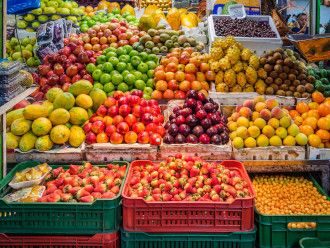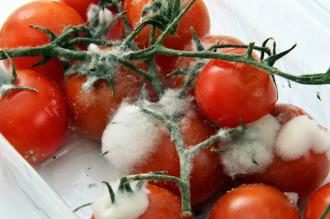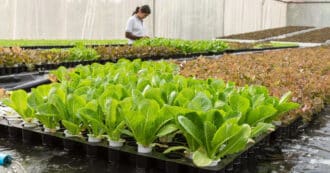By Harry Cooper – Pollution and waste are some of the biggest contributors to the environmental problems our world is facing.
What is Food Waste?
One of the most unique kinds of waste is the wasted food we all too often leave on our plates, goes off in our fridge or out of date in our cupboard.
As more and more food finds its way into the trash in the developed world, food waste has become a prominent issue in the fight against environmental degradation. Every one of us is responsible for food waste and can also take action to prevent food waste. Let’s learn some food waste facts!
Global Food Waste Facts
The United Nations has provided some interesting statistics on how much and in what way different countries and regions contribute to food waste. The UN found that global food waste amounts to one third of all food produced annually. This amounts to 680 billion dollars lost in developed countries, and 310 billion dollars in developing countries.
Where does Food Waste Come From?
Food waste in America, Europe, and other developing countries amounts to about 95-115 kg per person a year, whereas in developing countries it is a measly 6-11 kg per person a year. This shows how individuals are more to blame for food waste in America and other rich countries.
Developing Countries VS Developed Countries
What’s even more striking about the difference between food waste in developed countries versus developing countries, is at what stage in the food production supply chain food gets wasted. In developing countries, food usually gets wasted when it is harvested or being stored.
This statistic makes sense, as developing countries often lack the technology to properly store and preserve food, making a lot of it go to waste. However, in developed countries food waste occurs mainly at later stages in food production, usually at the stores selling the food, or when food is bought and taken home.
Why is There so Much Food Waste?
Food waste in America and other developed countries happens when food is already in grocery stores, restaurants, in our homes and on our plates. But what is it exactly about the way we buy, sell, and eat food that makes so much of it end up in the trash?
Food Wasted by Stores
There are many reasons why so much food is wasted at grocery stores.
One reason is that many stores want their food displays to look good. To make their displays look better, stores overorder and overstock their displays to make them look bigger. Over ordering inevitably leads to throwing out the unsold, but perfectly good, food at the end of the day.
Stores throw out fruits and vegetables that are blemished or imperfectly shaped. In fact 40% of fruits and vegetables are just chucked because they are too ugly to sell. Additionally, food with damaged packaging is thrown out too in order to make the products cosmetically appealing.
Food Waste in Restaurants
Many restaurants are also very guilty of wasting food. Many restaurants design their menus to be more appealing to the consumer, but this often leads to menu items being more likely to be wasted.
Meals produced at restaurants often come in portions that are too big to be finished, making customers more likely to leave leftovers that need to be thrown out.
Menus that are long and extensive cause restaurants to need many different ingredients in stock even though they won’t all be needed and eventually they too will be thrown away.
Food Waste at Home
Wasteful practices in restaurants, grocery stores, and other food vendors play a big role in food waste. However, the biggest portion of food waste from the developed world comes from households.
Most of this food waste comes from poor planning. Many people buy too much food or overprepare food so it ends up going bad. Just how much food can we eat? Others don’t even check the expiry date on goods when shopping leaving them little to no time to consume what they bought.
Expiration Dates
Food waste can also be caused by confusion over expiration dates. Expiration dates often use terms like “sell by”, “best by”, or “use by”. These terms seem to dictate an exact point in time in which a food becomes perishable, but there is actually no FDA regulations surrounding expiration dates. These dates are suggestions made by producers as to when a food’s peak level of quality is.
How much food is thrown out before it has gone bad? Milk producers usually print an expiry date that is about a week before the real expiry date just to insure themselves against lawsuits. This results in enormous quantities of good food wasted globally for absolutely no reason.
The Environmental Impact of Food Waste
So why is food waste such a problem, and why should we try to reduce food waste? Many would argue that since many parts of the world face food insecurity, consuming and wasting so much food in the developed world is selfish and unfair. While this is a very valid point, food waste can also have serious environmental impacts.
Food Waste in Landfills
When wasted food is thrown away it often ends up in landfills. When in landfills food waste begins to break down and decompose. While organic food matter normally decomposes in nature, in landfills decomposition produces more methane than normal, due to the lack of oxygen in landfills.
This methane is a greenhouse gas that contributes to global warming. It is estimated that one years worth of greenhouse gas emissions from a landfill is equal to the emissions from 21 million cars, or to the energy used by 12 million homes each year.
More Farms
Producing more food than necessary means that more farmland is needed to make this food. This becomes an issue as many modern farming techniques are already very unsustainable and harmful to the environment.
Many farms use pesticides and fertilizers on their crops that contain toxic chemicals. When it rains, these chemicals can get caught up in rain water run off which ends up polluting local water sources and disrupting marine ecosystems. Additionally, the livestock industry contributes 18% of all greenhouse gasses, as farm animals produce an incredible amount of methane which contributes to the climate crisis.
Decreased Biodiversity
The extra farmland created to meet the food demands of food wasting countries not only contributes to pollution and climate change, but can also decrease biodiversity. When land is set aside for agriculture, it can destroy biodiverse ecosystems that once inhabited a space in order to grow one or two species of plants or raise one or two species of animals.
Religion and Food Waste Facts
An article in the Journal of Consumer affairs entitled Is it godly to waste food? discusses studies done to explore how religious beliefs influence food waste and how to best reduce that food waste in religious communities. Interestingly, one of the studies showed that “supportive religious norms (e.g., sharing food) lead to reduced food waste”.
Perhaps in eating together, we remember the sacredness of food. Whatever the reason, the data is clear: the more we break bread together, the less we waste bread. So let’s start sharing and stop wasting.
* Featured image source









